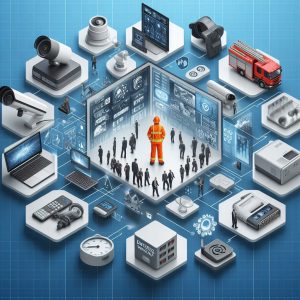In a rapidly evolving landscape of global travel and heightened security concerns, the security screening industry is undergoing a transformative shift, driven by artificial intelligence (AI). From airports to event venues and critical infrastructure, AI-powered systems are redefining how threats are identified, managed, and mitigated—offering faster, more accurate, and less intrusive screening processes.
A New Era in Threat Detection
Traditionally, security screening has relied heavily on human operators to interpret X-ray images, identify prohibited items, and make split-second decisions. While effective, this manual approach is time-consuming and susceptible to human error, especially under high-volume or high-stress conditions.
AI is changing that dynamic. By integrating machine learning algorithms with advanced imaging systems, new-generation screening technologies can now automatically detect weapons, explosives, and other contraband with unprecedented precision. These systems not only reduce false positives but also streamline the process, allowing passengers and packages to move through checkpoints more efficiently.
Key Innovations and Players
Leading security technology companies are at the forefront of this AI integration. Solutions such as millimeter-wave scanners enhanced with deep learning, automated baggage scanners using 3D imaging, and facial recognition systems tied to real-time threat databases are becoming increasingly common.
One prominent example is the use of convolutional neural networks (CNNs) trained on massive datasets of X-ray and CT images. These AI models can identify suspicious shapes and materials within seconds—faster and often more accurately than a trained human eye.
Download PDF Brochure @ https://www.marketsandmarkets.com/pdfdownloadNew.asp?id=264685413

Moreover, companies like Evolv Technology, Smiths Detection, and Leidos are developing AI-powered walk-through scanners that eliminate the need to remove shoes, belts, or laptops, significantly improving the passenger experience while maintaining robust security standards.
Benefits Beyond Airports
AI-enhanced screening isn’t limited to aviation. Stadiums, schools, courthouses, and corporate offices are adopting similar technologies to preemptively detect potential threats. For example, smart screening systems can now scan individuals as they enter a building, cross-reference data with watchlists, and alert security teams in real time.
These applications are proving crucial in environments where large crowds gather, helping prevent incidents before they occur and enhancing overall public safety.
Balancing Privacy and Security
Despite the clear benefits, the adoption of AI in security screening raises important questions around privacy, bias, and data protection. Critics warn of potential misuse of facial recognition and the need for transparent data governance. Industry leaders, regulators, and civil rights groups are actively engaged in developing standards and policies to ensure AI deployment respects individual rights while serving the broader goal of public safety.
As AI technology continues to mature, its role in security screening will only expand. Future systems may integrate behavioral analytics, biometric authentication, and predictive threat modeling, offering even more comprehensive protection.
For now, AI is proving to be a powerful ally in the quest for safer, faster, and more reliable security screening. The industry’s embrace of this technology marks a pivotal step toward a future where safety and convenience go hand in hand.
Frequently Asked Questions (FAQ)
1. How does AI improve security screening?
AI enhances security screening by analyzing images and data faster and more accurately than traditional human-only methods. It can identify threats such as weapons, explosives, or contraband using trained machine learning models, reducing false positives and speeding up the screening process.
2. Where is AI-powered security screening being used?
AI screening systems are being deployed in a wide range of locations including:
-
Airports
-
Stadiums and concert venues
-
Schools and universities
-
Courthouses and government buildings
-
Corporate campuses
-
Public transportation hubs
3. What types of threats can AI detect?
AI-enabled systems can detect a variety of threats including:
-
Firearms and knives
-
Explosives and bomb components
-
Liquid threats
-
Contraband (e.g., drugs, unauthorized electronics)
-
Anomalous behavior patterns (in advanced systems)
4. Does AI replace human security personnel?
No. AI is designed to augment, not replace, human screeners. It assists by quickly flagging potential threats for further investigation, allowing personnel to focus on decision-making and interaction with the public.
5. Is AI-based screening safe for individuals?
Yes. AI systems typically use non-invasive technologies like millimeter-wave imaging or CT scanners. These technologies comply with international health and safety regulations.
